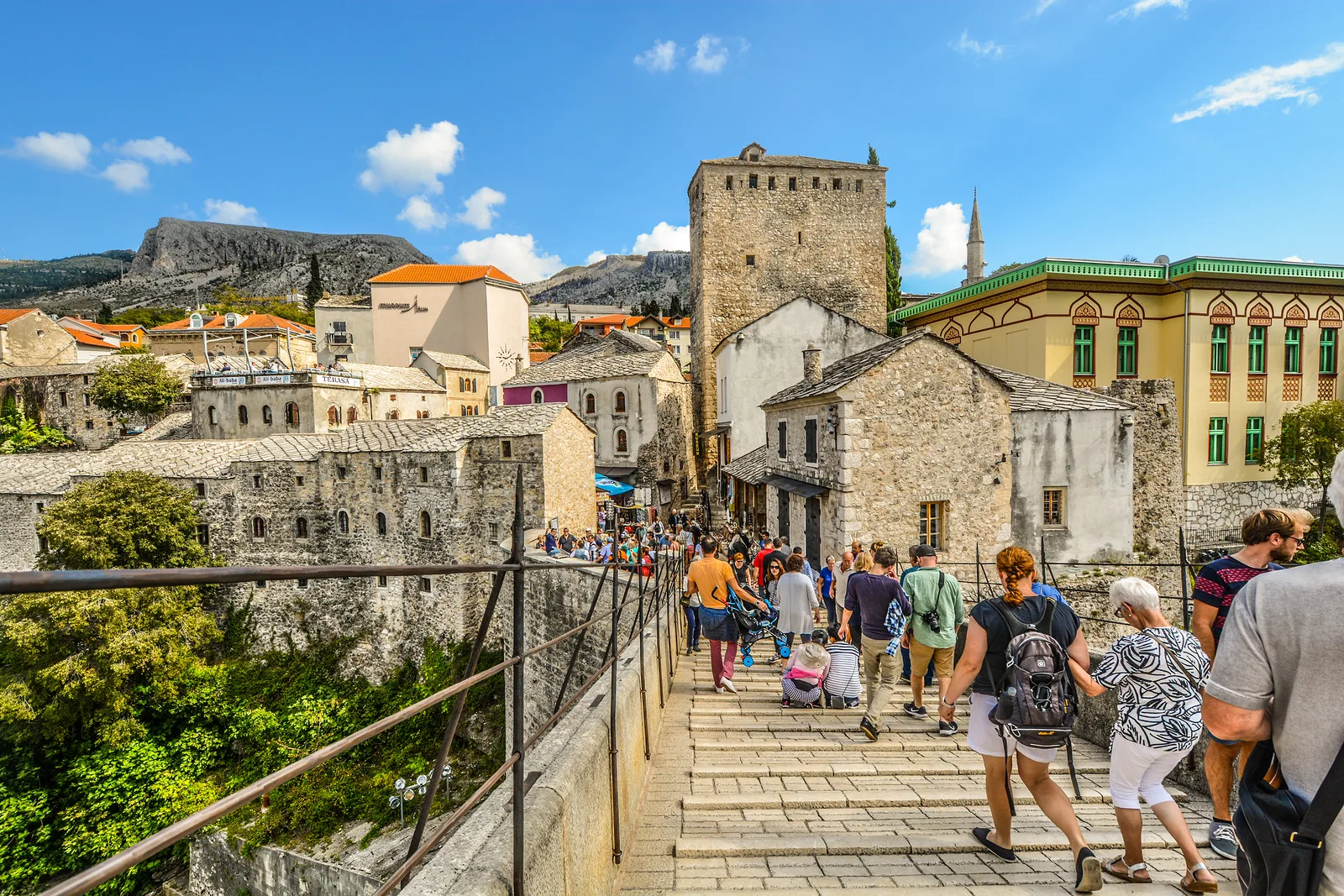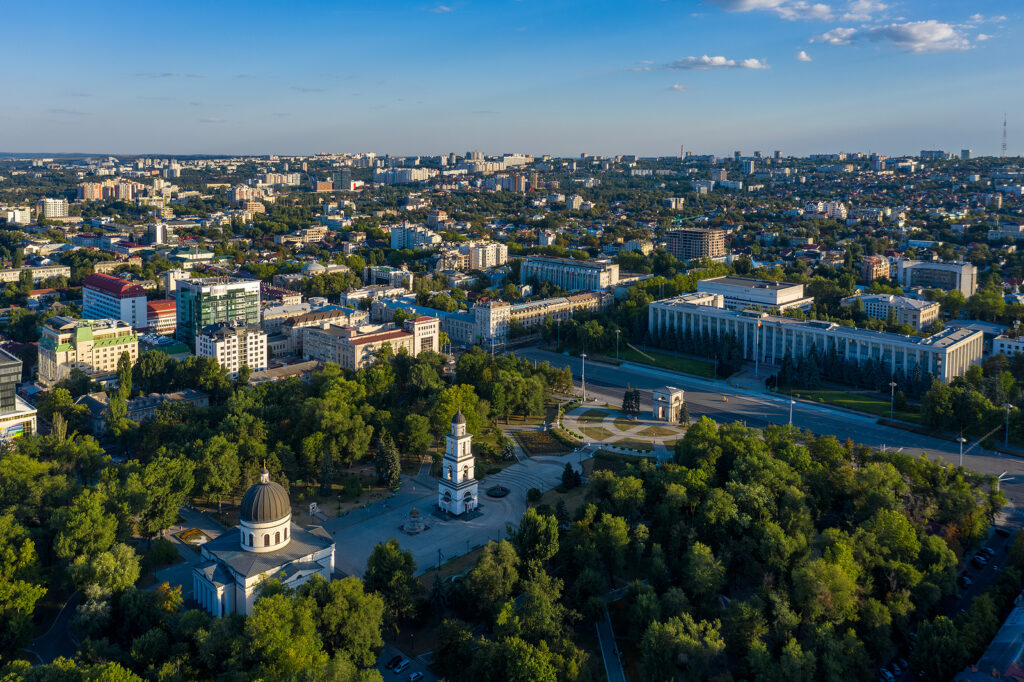It’s difficult not to view the recent trajectory of Moldova as one of the most impressive of any country in the emerging Europe region.
The European Council’s decision in December 2023 to open accession talks with the country was confirmation that Moldova’s sustained economic reforms and strong performance are paying dividends, and that its pivot westwards—which began in earnest only in 2020 when Maia Sandu was elected president—is now definitive.
Nevertheless, Moldova remains one of the poorest countries in Europe, according to the World Bank.
The Covid-19 pandemic, the energy crisis, and the refugee flows caused by Russia’s invasion of Ukraine starkly exposed the vulnerabilities of Moldova’s growth model—long reliant on remittance-induced consumption—to shocks.
A decline in remittances, combined with a shrinking and aging population, has resulted in low productivity growth, and a significant number of the lower-income households have become dependent on pensions and social assistance, says the World Bank.
But there is also reason for optimism. Often overshadowed by its larger neighbours, Moldova stepped into the limelight in 2023, not least when it successfully hosted the second meeting of the European Political Community (EPC), an informal body created in 2022 following a plea from French President Emmanuel Macron for a new political organisation to unite democracies—both inside and outside of the EU—on the European continent.
The EPC summit was preceded by a rally in support of European Union membership, attended by tens of thousands of people in Moldova’s capital Chișinău.
Robust recovery
After a challenging period marked by political upheaval and economic downturns, this plucky nation is showing signs of a robust recovery that could serve as a beacon of hope for small economies worldwide.
In 2022, Moldova’s economy faced significant headwinds caused primarily by Russia’s war on Ukraine, with a GDP contraction of five per cent. However, the Moldovan economy, with much foreign support, proved resilient, and the nation began to show signs of recovery in 2023.
Despite modest GDP growth of around 1.9 per cent forecast for the full year, the economy has been buoyed by a series of interest rate cuts from the National Bank of Moldova, which dropped from a staggering 21.5 per cent in November 2022 to a more manageable six per cent by June 2023. These measures, along with a decrease in inflation to 9.7 per cent in August 2023, have set the stage for a brighter 2024.
Looking ahead, Emerging Europe’s prediction for 2024 (which considers multiple forecasts from international finance institutions and think tanks) sees GDP growth of over four per cent for Moldova, growth which we believe is underpinned by several key factors.
Firstly, Moldova’s commitment to improving its business environment and promoting transparency in the banking sector is expected to attract foreign direct investment and bolster private sector development. In December 2023 it appointed Anca Dragu, a former Romanian finance minister and senior IMF official to lead the National Bank.
Secondly, the country’s efforts to align with European standards and integrate into regional markets are paying off, with the European Bank for Reconstruction and Development (EBRD) financing infrastructure improvements to foster links to the EU.
Thirdly, gas imports have by and large been switched away from Russia to other suppliers. The energy crunch of 2022-23 is unlikely to recur.
This, coupled with a better harvest—wheat and sunflower seeds are key exports—and a shift in trade flows from Russia to the West, is expected to boost incomes, exports, and the growing food and textile industries.
Indeed, according to the Vienna Institute for International Economic Studies (wiiw), the country has digested the structural shocks related to the shift in its trade linkages from Russia to the West, and the benefits of deepening EU integration in return for institutional reforms are starting to be felt.
Romania is Moldova’s most important partner, while Ukraine has become its second most important in terms of exports, and its third most important in terms of imports (after China). Russia’s share in imports fell to four per cent in the first half of 2023 – from 14 per cent the year previously.
The Vienna Institute also cites improving relations with the country’s breakaway region of Transnistria as a cause for optimism. Tensions with hitherto Russia-backed Transnistria have not escalated recently, as the separatist region has no long-term alternative to economic integration with the rest of the country, says wiiw.
Towards a knowledge economy
Then there is the country’s shift towards a more knowledge-based economy, with the ICT sector expected to play a considerable role in its future growth.
ICT exports grew 35 per cent in 2021, to almost 350 million euros, and foreign investments in Moldova’s IT sector doubled during the 2018-22 period. The percentage of GDP generated by the sector now tops five per cent.
Moldova ranked 16th in the latest, 2023 edition of the Emerging Europe IT Competitiveness Index, up from 17th in 2022. The country ranks first in terms of data costs and boasts fast internet speeds—the third-fastest in the region.
Moldova’s IT Park, or MITP, created in 2018, has been a catalyst for the development of the sector. Around 80 per cent of the revenue of the country’s IT sector is generated by residents of MITP, who benefit from a series of incentives including a flat tax rate of just seven per cent. The tax is paid on sales and replaces all other taxation, including profit and salary taxes.
The political context
In what is set to be a pivotal year, Moldova faces a major test in 2024 in the shape of a presidential election in November, which is set to be followed by a parliamentary vote early in 2025. A referendum on Moldova’s foreign policy trajectory—asking simply, do Moldovan’s support EU integration or not—is likely to be held concurrently with the presidential election.
The referendum, called by Sandu, is quite deliberately and cleverly designed to shore up her support. Nevertheless, Russia is almost certain to make concerted attempts to disrupt the electoral process despite the Chișinău government’s recent steps to curtail the Russian presence in the country by restricting access to media that spreads Russian propaganda.
Local elections in November 2023 offered a glimpse of what we should expect. There was widespread support for candidates aligned with Sandu, although her Party of Action and Solidarity (PAS) failed to secure a mayor in any of the country’s major cities. In Chișinău, incumbent mayor Ion Ceban was re-elected ahead of the Party of Action and Solidarity candidate and, according to the German Marshall Fund, is shaping up to be a contender in the presidential election.
Ahead of the local elections, Ceban founded a new centrist party, the National Alternative Movement (MAN). This party now controls the capital’s city council and draws support from both the left and right, as well as from pro-Russian and pro-European voters.
However, Infrastructure Minister Andrei Spînu, the vice chairman of PAS, was bullish after the elections and said that the main takeaway was that Moldova’s “pro-European choice has won confidently across the whole country”.
For the sake of Moldova and its economy, it is to be hoped that the same will be true following this year’s presidential vote and referendum.







